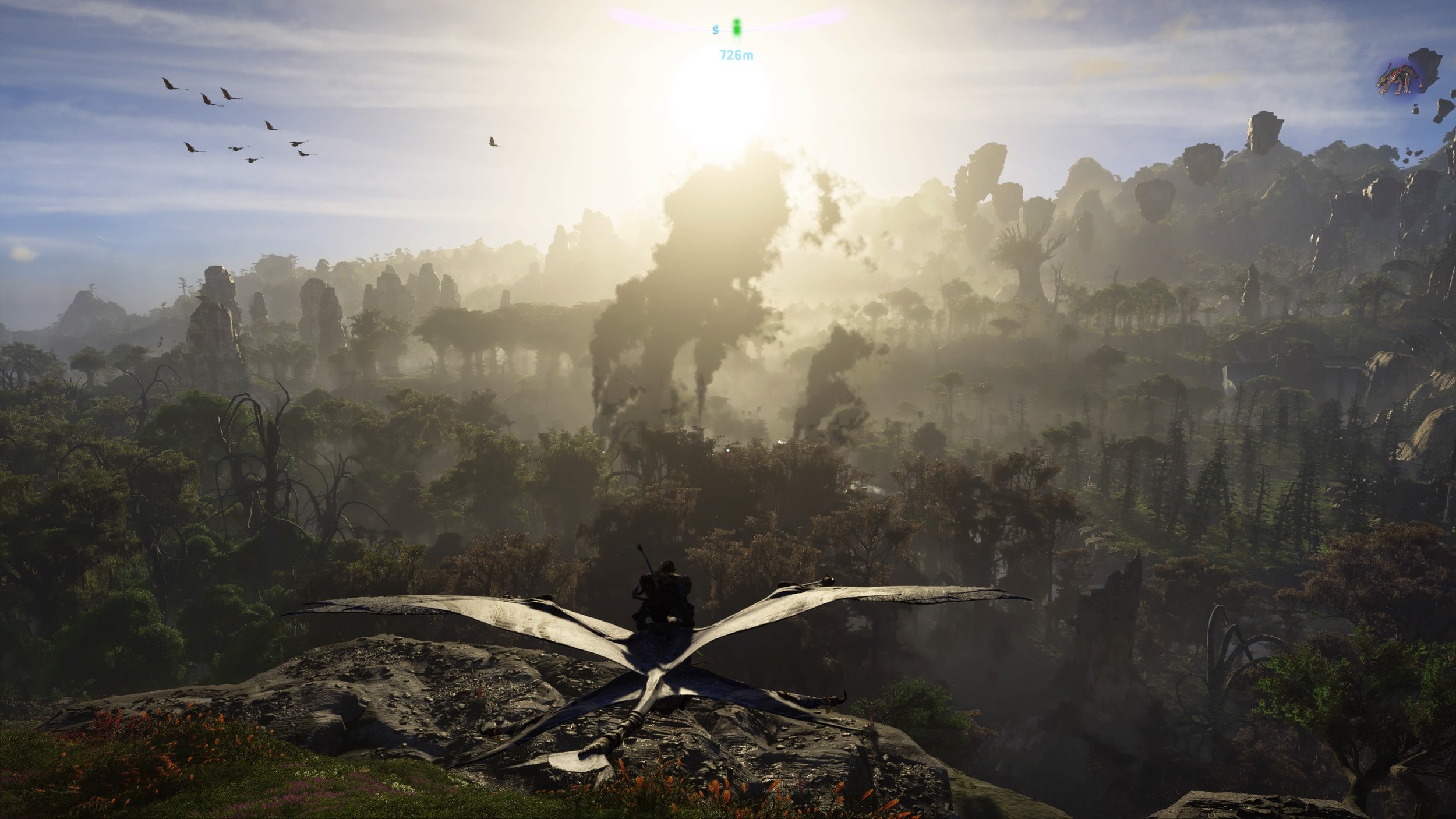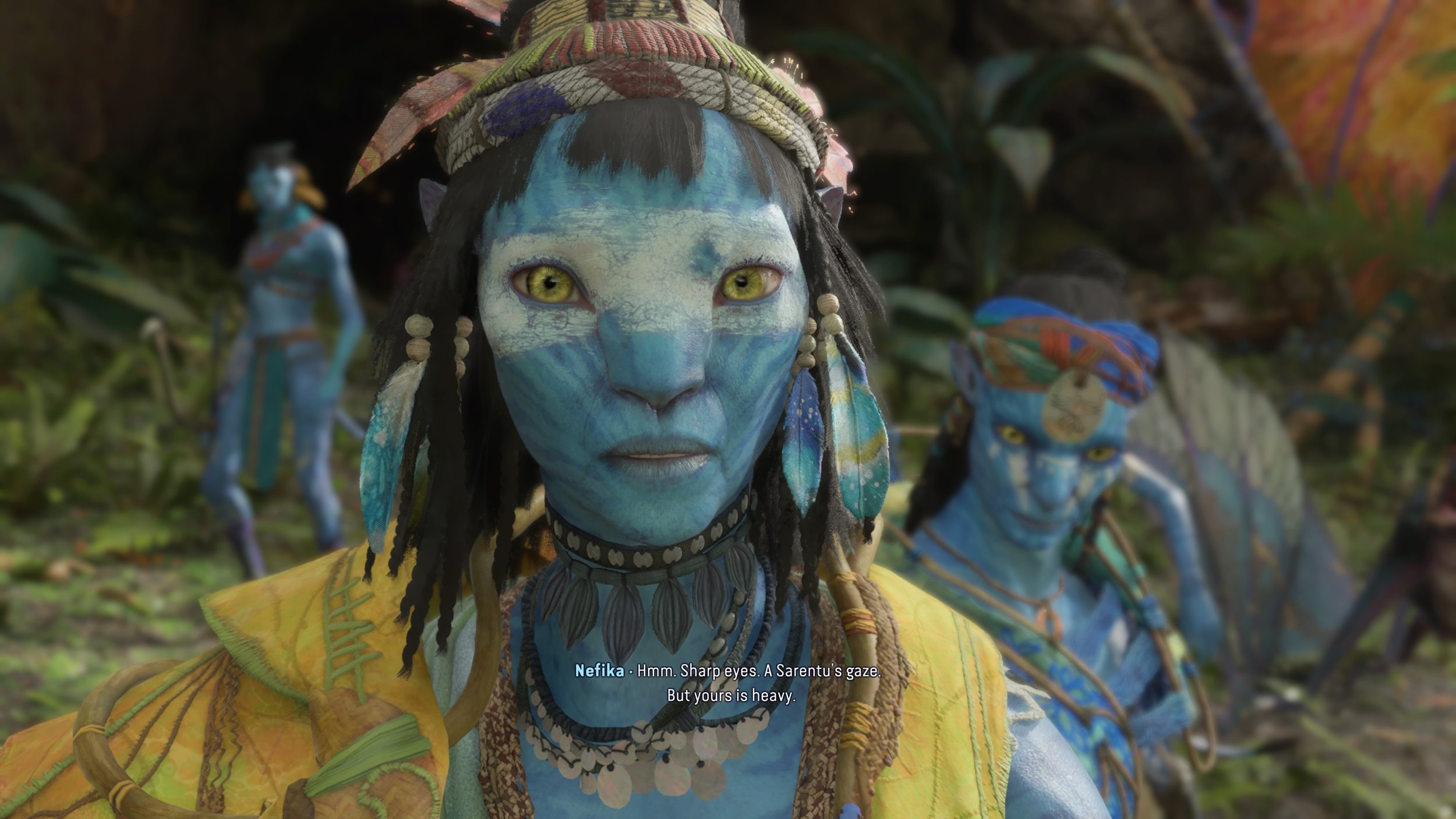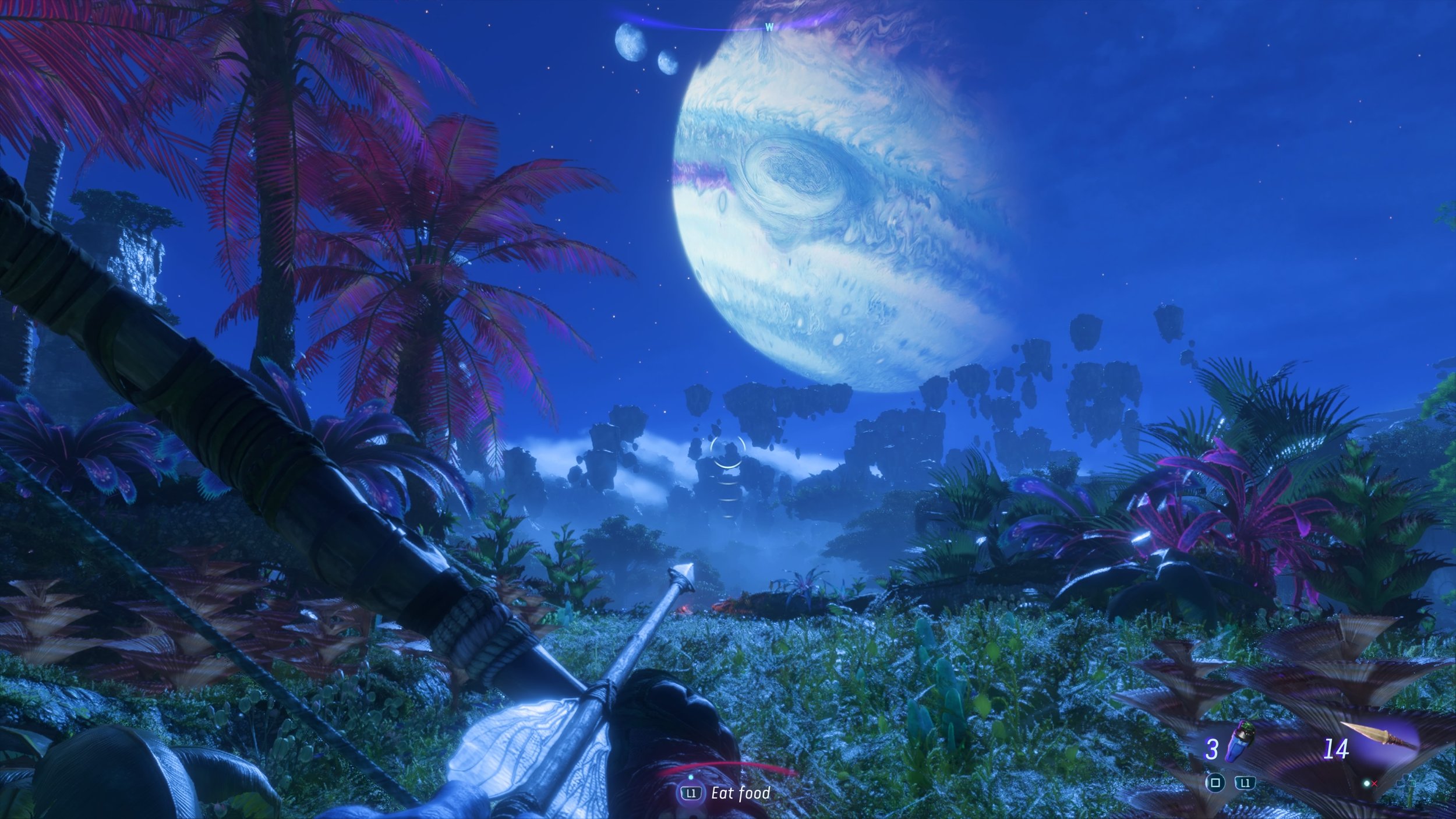Avatar: Frontiers of Pandora Review - Far Cry Blues
/2023 has been a fantastic year for gaming, and when December hit, I thought for sure I’d seen the best the year has to offer. But I was wrong, as Ubisoft’s Avatar: Frontiers of Pandora came out at the last minute to deliver one of the publisher's best open-world games released in years. It doesn’t reinvent the wheel in terms of the open-world games Ubisoft is best known for, but this is probably the version of the formula I prefer the most as I didn’t think I would enjoy the world of Pandora as much as I did during my time with this game. It’s rich with content, and it has the most interactive environment I’ve experienced in a long time.
Developer Massive Entertainment, better known for their work on The Division series, did a fantastic job bringing James Cameron’s Avatar franchise to life in video game form, as this was a well-thought-through adaptation based on the source material thus far. You play not as a human in an Avatar body, but as a native Na’vi who’s been raised by humans from childhood. Now grown up, and thanks to unfortunate circumstances, your surrogate is forced to experience the dangerous and beautiful world of Pandora first-hand, which leads to your joining a resistance faction, a mix of humans and Na’vi. You’ll be fending off against the human organization known as the RDA, which is hell-bent on extracting all of the best resources this foreign planet has to offer.
The main story is surprisingly long, dragging on to the point where my interest waned at the 20-hour mark. It took me 32 hours to casually reach the end credits, and while Frontiers of Pandora had a decent start, the characters couldn’t hold my interest long enough for me to feel invested in the plot. There’s a long list of characters that sadly don’t leave a lasting impression, to the point where I’d end up forgetting them within a few hours - this made the final moments of the game less impactful. Everyone feels somewhat the same as you go from one Na’vi clan to the next, which is a missed opportunity in terms of world-building and eliciting further understanding of the Na’vi’s various clans. The only character that stands out is the human Priya, who has a quirky and awkward personality. Thanks to that particular character, everyone else felt dull and gray. The lack of personality is also true for the antagonists of the game, who are simply one-dimensional human villains that feel like background noise. They only make a real impact in the main campaign’s final moments. It’s a shame to have to say that the environment has more personality than the cast of Avatar: Frontiers of Pandora.
Pandora does all the heavy lifting
The real star is Pandora itself. The Na’vi you control is experiencing the world for the first time, learning which environments are safe and which are deadly via trial and error. At first glance, the world is brimming with life - dense but colorful, with a visual overload of multiple colors and unusual landscapes of floating rocks. It’s so overwhelming that I had to rely heavily on the Na’vi sense mechanic (similar to the Batman Arkham games’ detective mode) to highlight key interactions for the player. I was then using it to constantly analyze every plant or animal I could find, as most of them could be harvested for crafting new gear or food for unique buffs in combat. In this game, gathering crafting materials and extracting them in the right setting (dry or rainy climate, for example) and in the proper way will determine the quality of your harvest.
Certain plants and trees have unique characteristics and functions. There’s deadly plants that fart poison gas, large leaves that will break a player’s fall, plants that boost your movement speed, and even plants that, if approached slowly, will open up and invite you to harvest what they have inside. What’s impressive is that each unique plant is only seen in certain regions of the world map, so each time you progress, you’re introduced to a new batch of either useful or deadly environments. Thanks to this, exploring the terrain was a joy, making Pandora its own character, complete with different moods and personalities depending on where you go. It was a joy to trek through Pandora as it felt refreshing to have such a dynamic world.
The exploration opens up even more as soon as you get the ability to fly with your very own Akran mount, making it easier to go from point A to point B with ease. The trade-off for exploring the world by flight is being able to take in how beautiful this game is. From floating mountains and vast open fields to dense and colorful forests, this is a game that’s pleasing to the eyes almost 90% of the time. It also has various weather conditions - be it fog or rain, the amount of detail from afar can rival games like Horizon Forbidden West. Massive Entertainment didn’t skip corners in highlighting Pandora’s good side as Avatar: Frontiers of Pandora is always a visual marvel, even in narrow spaces such as caves or human-made facilities. Performance was also spot-on. Bugs were few and far-between despite the scale, and the framerate remained stable at 60 fps on performance mode. Even the Na’vi character models are commendable, not just due to the clothing and textures, but the expressions of each character, clearly showing that they either studied the movies extensively, or James Cameron himself supervised how the Na’vi should act and move.
Humans do suck
Thanks to the RDA extracting resources, these compounds serve as the typical bases a player would clear in games like Far Cry or any similar open-world game. Doing so gains access to that area's resources as players can’t harvest materials when these compounds are active due to the pollution they bring to the area. This is a neat twist to Far Cry-like enemy bases that link well to the game’s lore as you have a stronger incentive to tackle them beyond the usual loot rewards. You can also tell if an RDA compound is nearby, as wildlife affected by man-made structures will be gray or brown as if wilting or turned to ash by foreign interference.
Naturally, most of your battles will be against the RDA. With your Na’vi being raised by humans, he/she can use either Na’vi or human weaponry with ease. For RDA equipment, you have typical guns like an assault rifle or shotguns, which are effective to some extent, but lack depth when compared to the native weapons of bows and spears, which can be crafted from the materials you’ve gathered, creating unique weapons that will have properties such as increased damage to certain enemy types or added resistance to certain forms of damage. There are a good amount of weapon types, with longbows best for long-range and stealth kills, shortbows for quick hip burst fire, and shotguns adept at dealing with enemies trying to close the gap. Nothing’s too unique here, but I did have my fair share of fun being the ‘One-Na’vi-Army’ facing off against humans using mech-like machines to compensate for the difference in strength and size.
As for wildlife, some attack on sight, while others are left to do their own thing and will either run or attack you if provoked. You can hunt and track certain movement patterns with your senses, a simple hunting system that makes players use basic stealth to hopefully take down wildlife in one shot without them noticing. Doing so will grant you a clean and merciless kill, which rewards you with higher-quality materials. This is the only time I appreciated stealth in the game because I would prefer going guns blazing against humans, seeing as how the moment they spot you in their territory, the whole base is instantly alerted of your presence.
Beyond combat, Frontiers of Pandora is just filled with all the typical open-world content you can think of. There are offline facilities that can be turned on with a simple hacking mini-game to get access to rewards and side quests, as well as special trees that serve as key points of interest that can either score you skill points, increase your health permanently, or offer new perks when touched. Then you have Na’vi camps serving as city hubs to stock up, use crafting benches, and pick up side quests to distract you from the main path. There’s nothing unique as far as open-world activities go, but it’s packed to the brim as even after 30 hours, I’m not even close to finishing even one section of the world map to 100%.
The limitations of licensed games
With Frontiers of Pandora being a licensed game based on the Avatar movie series, it was clear that Massive Entertainment was limited in creativity as the enemy and wildlife variety felt restricted. It’s as if those involved with the series told the developers to stick to what they have shown to the public and not invent anything no one has seen before. This results in insufficiently unique and interesting enemy types to populate this big open world, as you’ll see yourself engaging with what we’ve seen in the movies. There’s no new RDA machine or new wildlife unique to the game (as far as I can see) as it felt like they were only given the go-ahead to use what was shown in the movies thus far. This hurts the game a bit, as repetition kicks in fairly early. For instance, when a new enemy from the RDA shows up, it’s the same old mech, just with a new weapon like a flamethrower, or they’ll introduce a more mobile mech, or one with shields. Humans on foot are worse, as they are little ants with guns running head-first at you with no care for their safety, which can actually feel more menacing as they are smaller targets that charge in numbers.
I expected this game to be a simple cash grab. Avatar: Frontiers of Pandora not only checks all of the boxes for a functional video game to support the film franchise, but it also delivers a breadth of open-world content. Ultimately, Frontiers of Pandora gave me further appreciation for the world James Cameron is building in the movie series, but if you take the world out of the equation, this is simply a typical Ubisoft open-world game with the same fodder and practices of their other franchises, like Assassin’s Creed or Far Cry, and that’s fine. They respected the source material by championing Pandora and Eywa. The Far Cry open-world formula is a perfect match for this adventure, as this is a planet with so much care and thought put in that despite its flaws, I found myself itching to explore what’s beyond all those floating rocks. But if you’re not on board with how Ubisoft does open-world games, then you’ll be struggling with half of the game’s core pillars right off the bat.
Verdict: 4/5 (Fantastic)
*We’ve recently changed our review score format from a 10-score rating to a 5-score rating. You can check out the definition of the new review score system on our About Us page.
PROS
Dynamic environments in every corner of the world
Visually stunning, jaw-dropping vistas, and impressive performance despite its scale
A solid take on the tried and tested Ubisoft open world formula
CONS
Main story and characters are flat, then paired with horrible antagonists
Not enough enemy variety types for how big the game is
What I’ve Played
Finished the main story
Did a fair amount of side activities and explored a good portion of the world map
This review is based on a PS5 code provided by the publisher











Assassin’s Creed Shadows greatly blends the classic Assassin’s Creed stealth with the RPG elements of recent entries. Its dynamic world, seasonal changes, and improved stealth mechanics make exploration a joy, but Yasuke’s restrictive gameplay, overall story, and a half-baked notoriety system hold it back.